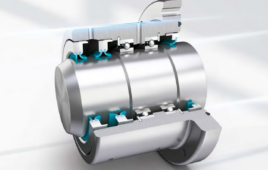Fifty high-technology innovation industries are crucial to future prosperity in the United States but face substantial competitiveness challenges, concludes a new report released by the Brookings Institution’s Metropolitan Policy Program.
Expanding the size and competitiveness of these industries, which cluster in metropolitan areas across the country, is a prerequisite for achieving broad-based growth and prosperity in the United States.
In the report, “America’s Advanced Industries: What They Are, Where They Are, and Why They Matter,”Mark Muro, Jonathan Rothwell, Scott Andes, Kenan Fikri and Siddharth Kulkarni define “advanced industries.” They also analyze the advanced industries sector, which includes 50 R&D- and STEM-worker-intensive manufacturing, energy and services industries ranging from aerospace and automotive to energy generation, computer software and biotech.
The advanced industries sector directly employs 12.2 million Americans and, factoring in both direct and indirect employment, supports over one-quarter of all U.S. jobs. In 2013 the average advanced industry worker earned $90,000 in total compensation, nearly twice as much as the average worker in other industries—and these wages have been rising.
Even workers with lower levels of education benefit from this wage premium: advanced industries workers with only an associate’s degree earn more than four-year college graduates working in other industries.
The report includes state and metropolitan rankings of advanced industry intensity, determined by number of advanced industry jobs as a percentage of total employment. At the metropolitan level, San Jose, CA; Seattle, WA and Wichita, KS hold the top three spots, followed by Detroit, MI. Michigan, Washington and Massachusetts lead the state rankings.
The competiveness of the advanced industries sector will be critical to revitalizing the U.S. economy. These industries are the chief source of transformative new technologies whose impact radiates throughout the entire economy, increasing productivity, enhancing households’ living standards and generating additional economic activity. Likewise, the sector accounts for 60 percent of the nation’s exports.
However, after 20 years of offshoring and inconsistent federal policy, the size of the sector’s employment and output, as a share of the total U.S. economy, has shrunk. The result is that the United States is losing ground to other countries on advanced industry competitiveness.
”Advanced industries power our national and regional economies, but their preeminence is in no way assured—and in fact it’s challenged,” said Muro, Brookings senior fellow and director of policy at the Metropolitan Policy Program. “If we want to reclaim broadly shared opportunity in the United States we are going to need to shore up the global competitiveness of our advanced industries.”
The Brookings report calls for concerted action on the part of private-, public-, and civic-sector leaders to expand the nation’s advanced industries. Especially important, given federal gridlock, will be creative problem-solving on the part of private- and public- sector leaders at the state and regional level. Among other initiatives, the nation’s private- and public-sectors should work together to:
- Commit to innovation by increasing R&D in more open or networked innovation models and creating a lasting source of advantage for firms and places.
- Recharge the skills pipeline by developing industry-led, sector-specific regional skills initiatives to increase the availability of the skilled workers that regional firms need.
- Embrace the ecosystem by investing in anchor institutions and cluster infrastructure to strengthen the regional industrial communities where innovation and skills can develop.
“America’s advanced industries are going to be critical to restoring broad-based prosperity in U.S. regions and in the nation,” said Muro. “We should work hard and in new ways to enlarge them and increase their vitality.”
Filed Under: Industrial automation




